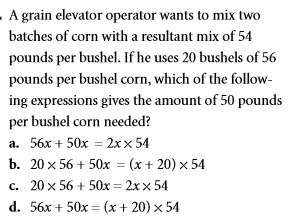
AlgebraQuestion and Answers: Page 265
Question Number 96407 Answers: 1 Comments: 4

Question Number 96390 Answers: 1 Comments: 0

Question Number 96340 Answers: 0 Comments: 4
Question Number 96329 Answers: 0 Comments: 2
$${x}\lfloor{x}\lfloor{x}\lfloor{x}\rfloor\rfloor\rfloor=\mathrm{88} \\ $$$${x}>\mathrm{0} \\ $$
Question Number 96321 Answers: 1 Comments: 1
$${It}\:{is}\:{given}\:{that}\:{x}^{\mathrm{2}} =\mathrm{2}^{{x}} .\:{Find}\:{x}. \\ $$
Question Number 96311 Answers: 1 Comments: 0
Question Number 96296 Answers: 1 Comments: 0

Question Number 96289 Answers: 0 Comments: 1
$$\mathrm{1010}^{{x}} +\mathrm{2020}^{{x}} =\mathrm{4040}^{{x}} \\ $$$${x}=? \\ $$
Question Number 96244 Answers: 1 Comments: 2
Question Number 96189 Answers: 3 Comments: 0
Question Number 96171 Answers: 0 Comments: 2
Question Number 96131 Answers: 1 Comments: 0
Question Number 96072 Answers: 1 Comments: 0
Question Number 96021 Answers: 0 Comments: 1
Question Number 95964 Answers: 0 Comments: 0
Question Number 95967 Answers: 1 Comments: 1

Question Number 95920 Answers: 3 Comments: 0
Question Number 95919 Answers: 1 Comments: 0
Question Number 95898 Answers: 0 Comments: 0
Question Number 95843 Answers: 1 Comments: 0
Question Number 95789 Answers: 1 Comments: 1
Question Number 95767 Answers: 1 Comments: 0

Question Number 95766 Answers: 0 Comments: 1
Question Number 95765 Answers: 0 Comments: 3
Question Number 95742 Answers: 2 Comments: 2
Question Number 95668 Answers: 1 Comments: 2
Pg 260 Pg 261 Pg 262 Pg 263 Pg 264 Pg 265 Pg 266 Pg 267 Pg 268 Pg 269
